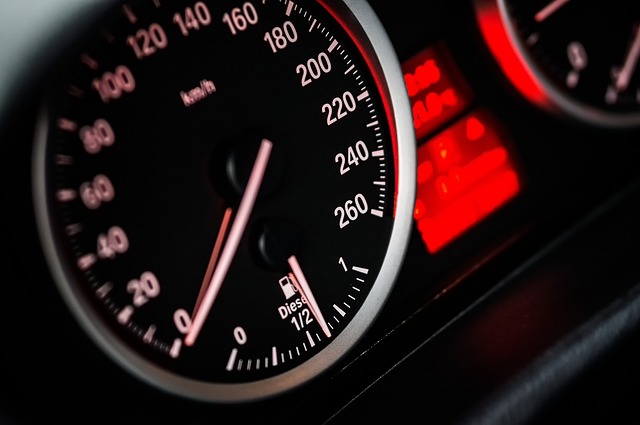Looking to register your car in California? This comprehensive guide walks you through the process, from understanding key requirements to optional online registration. First, grasp California’s car registration mandates, including needed documents and fees. Then, master the essential DMV VIN verification step-by-step. Alternatively, submit an application and pay at your local DMV or opt for the efficient online method.
- Understand California Car Registration Requirements
- Gather Necessary Documents for Registration
- Perform DMV VIN Verification Step-by-Step
- Submit Application and Pay Fees at the DMV
- Register Your Vehicle Online (Optional Method)
Understand California Car Registration Requirements

Before registering your car in California, it’s crucial to understand the state’s specific requirements. The California Department of Motor Vehicles (DMV) mandates several key steps for new and used vehicle registration, emphasizing a secure and transparent process. One vital aspect is the DMV vin verification, which ensures the vehicle’s identity through its unique Vehicle Identification Number (VIN). This step is essential to prevent fraud and ensure the safety and legality of your vehicle.
Additionally, consider utilizing mobile vin verifier services for convenience. These mobile inspections offer a quick and efficient way to meet California’s registration standards, allowing you to save time while maintaining compliance. A simple VIN inspection can be done by authorized professionals using state-approved methods, ensuring your car’s registration is smooth and hassle-free.
Gather Necessary Documents for Registration

Before you begin the registration process, ensure you have all the required documents ready. The California Department of Motor Vehicles (DMV) will need several key pieces of information and papers to verify your vehicle’s details accurately. Firstly, gather the vehicle’s registration certificate from its previous owner(s), if applicable. This document is crucial for establishing ownership and transferring it to your name.
Additionally, you’ll require a valid driver’s license or state ID card, proof of insurance, and the Vehicle Identification Number (VIN) verification report. For convenience, many residents opt for a mobile VIN inspection or verification service that can provide this report digitally. This step is essential in ensuring your car’s history is accurately recorded, so make sure you have all these documents readily available to streamline the registration process at the DMV.
Perform DMV VIN Verification Step-by-Step

Performing a DMV VIN verification is a crucial step when registering your car in California. Here’s how to do it step-by-step:
1. Gather Documents: Before heading to the DMV, ensure you have all necessary documents, including your vehicle’s registration certificate (if previously registered), title, and valid driver’s license.
2. Identify Your Vehicle: The California DMV will need your Vehicle Identification Number (VIN). This unique 17-character code is usually found on a plate attached to the vehicle’s dashboard or under the hood. You can also check it on your registration documents or owner’s manual if available.
3. Complete Online Application: Start by filling out the online application for car registration through the California DMV website. Here, you’ll be prompted to enter your VIN and other essential details.
4. Schedule Mobile VIN Inspection (Optional): If you prefer a quicker process, consider scheduling a mobile VIN verification service. Some companies offer this option where a trained professional will come to you to perform the VIN check using specialized tools, ensuring a smooth and efficient experience.
5. Present at DMV: Once your application is complete, take all required documents and visit your nearest California DMV office. A representative will verify your VIN through their system to ensure the vehicle’s history matches the information provided.
6. Pay Registration Fees: After passing the VIN verification, you’ll be directed to pay the applicable registration fees based on your vehicle type and other factors.
Submit Application and Pay Fees at the DMV

After gathering all your necessary documents, it’s time to submit your application and fees at the DMV. This crucial step involves filling out Form DV-47, which is the Application for Title and Registration. Here, you’ll provide detailed information about your vehicle, including its make, model, year, and unique Vehicle Identification Number (VIN). Along with this form, you’ll need to submit relevant paperwork such as proof of ownership, insurance, and identification.
One efficient way to streamline this process is by utilizing a mobile vin verifier or conducting a mobile vin inspection. This technology allows you to quickly verify your vehicle’s VIN accuracy, ensuring a smooth transition during registration. By having all your documents prepared and considering these modern verification methods, visiting the DMV becomes a more manageable task.
Register Your Vehicle Online (Optional Method)

Registering your vehicle online can save you a trip to the DMV and streamline the process. In California, this involves using the Department of Motor Vehicles (DMV) online services for verification. Start by ensuring your vehicle meets all legal requirements for registration. Next, obtain a Vehicle Identification Number (VIN) verification report from a trusted source, which can include official DMV services or a mobile vin inspection tool.
A mobile vin verifier or mobile vin verification app can facilitate this step by providing a quick and convenient way to check the VIN data online. Once you have your verification report, proceed with the registration process on the DMV’s website. Input your vehicle details and attach the required documents, including proof of insurance and ownership. After successful submission, you’ll receive your registration documents digitally, making the entire car registration experience efficient and hassle-free from the comfort of your home.
Registering a car in California involves understanding key requirements, gathering essential documents, and completing critical steps like DMV VIN verification. By meticulously navigating these processes, from initial application to online registration (if available), you can ensure your vehicle is legally registered and ready to hit the roads. Remember, proper documentation and adherence to state guidelines are paramount for a seamless car registration experience in California.
